Mistaken Identity
It seems when I identified the unknown Chilli that I overwintered, I came close. I am, however, definitely not getting a cigar. I had the Chilli as an Aji Limone (Lemon drop). However, when a pod turned red, it became apparent that this identification couldn’t be correct. Lemon drops don’t turn red. They stay a bright yellow colour.
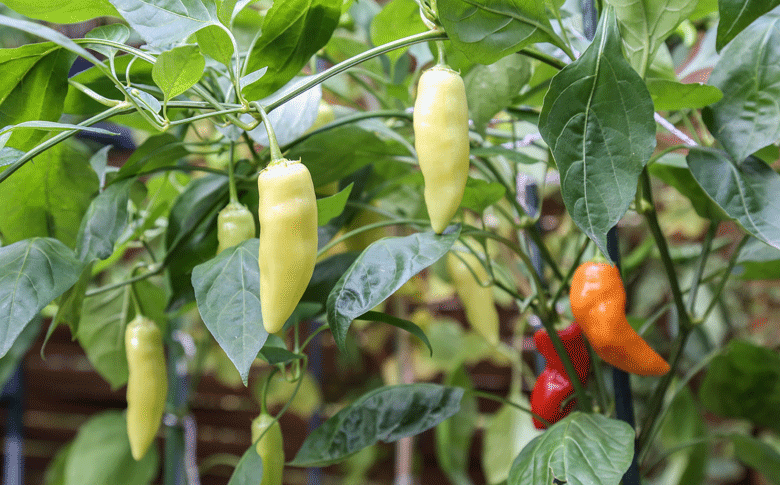
Confusing the Aji Chillies
I now know why I got it wrong. I didn’t have all the facts. The pods on the plant were still immature, and I should waited until they ripened before attempting to identify it.
It turns out the Chilli is, in fact, an Aji Crystal or White Wax Chilli. This Chilli has many similarities to the Lemon Drop, which made mixing them up really easy. The similarities are as follows:
Both belong to the Capsicum baccatum species. They both have yellow fruit at some time. In the case of the Aji Crystal, however, the yellow fruit turns orange and then red. One and the other have a citrus taste when yellow, and their Chillies are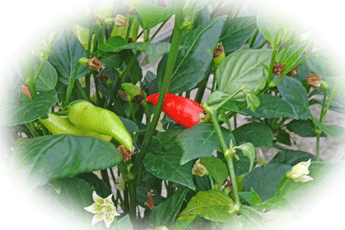 pendant (hang down). Their fruit seems to be roughly the same shape, but the Lemon Drops Chilli has a nipple shape at its tip (I wasn’t aware of this before now). The leaves of the two Chillies are also the same shape (ovate-lanceolate).
pendant (hang down). Their fruit seems to be roughly the same shape, but the Lemon Drops Chilli has a nipple shape at its tip (I wasn’t aware of this before now). The leaves of the two Chillies are also the same shape (ovate-lanceolate).
Considering the plant only had a few of Chillies when I made the first identification, it was a mistake easy to make. At the time, it was impossible to predict the pods would turn red. All the other characteristics seemed to point towards it being a Lemon drop. So when I came to my conclusion, I wasn’t looking any further. I thought I had it nailed. But not so, another lesson had to be learned.
It just goes to show. When it comes to identifying Chillies, sometimes you even have to dig even deeper to be entirely sure you’ve got it right. Waiting for the plant to mature and its fruit ripen certainly seems to be part of this equation!
Let’s have another go
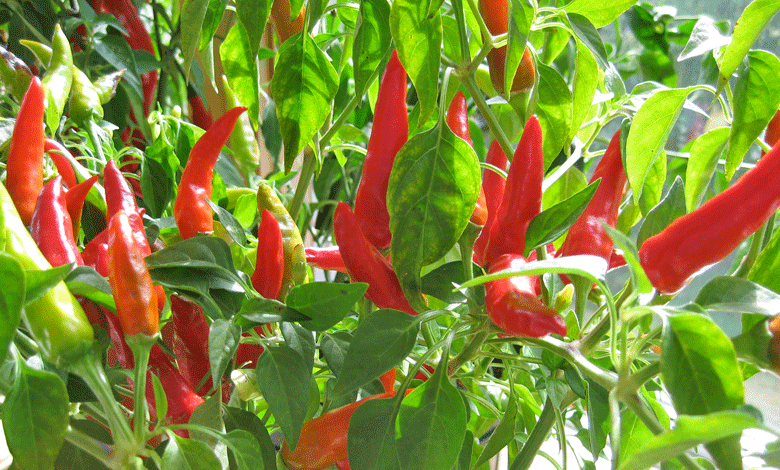
Another mystery Chilli
On the same note, I have another plant that I want to identify. It is a plant that I grew from seed, but it doesn’t look like I expected. When I bought the seeds, I believed I had purchased a Numex cultivar. That is what the seller claimed it would be. However, I am not sure about that.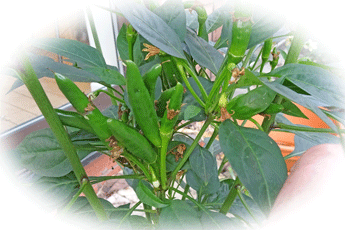
This plant could be a Yatsufusa (Yatzy), Santaka or Chi Chien Chilli, rather than a Numex. It has clusters of between three and seven pods that face upwards.
The Yatsufusa and Santaka Chillies are from Japan. The Chi Chien Chilli is widely grown in China. These plants all have the trait that their pods grow upwards facing the sky.
There is a Numex Chilli that also has this trait. It is called the Numex Mirasol. Mirasol means facing the sun. However, on checking into this Chilli, images on the web show its pods are far more conical and plumper than the Chillies I have on my plant. So, based on what I have seen, I am not convinced my plant is a Numex Mirasol, but let’s try and figure it out what it is. In a previous post, I discussed how this can be done.
Identifying the Chilli
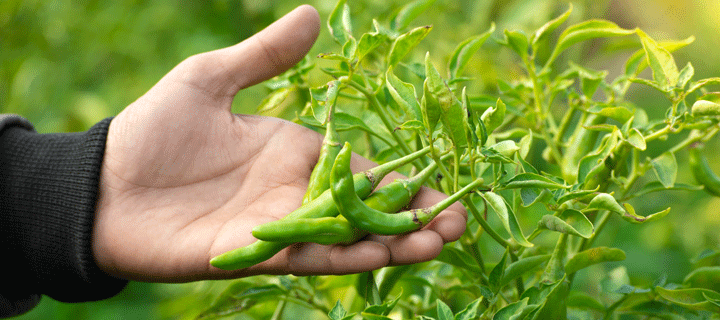
How I did it
Armed with my notebook and pen, I made notes of what I saw on the plant.
- As mentioned, there are various clusters of between three and seven pods that face upward. This trait can often be found in a Capsicum Frutescens trait, but also in Capsicum annuum.
- The fruit is about two inches long and half an inch thick. It is green in colour at this time. I, however, assume they will turn red when the plant matures.
- The plant is a prolific producer. It already has many Chillies, but it also has lots of flowers. These will turn into fruit once they get pollinated
- The flowers are coloured white. A Capsicum annuum trait
- The leaves are long and lance-shaped (lanceolate).
- It is obviously a plant that can grow quite tall. It is currently in a 10-inch (three-gallon) and has grown to just under two and a half feet tall. Had it been planted in a bigger container, it would probably be taller now
Research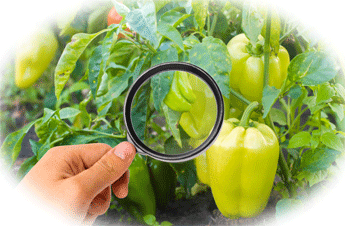
- From its flowers, the Chilli seems to fall into the Capsicum annuum species. It shares this with the Numex Mirasol, Yatsufusa, Santaka and Chi Chien. The flowers are white
- The leaves of my plant and pictures I found of Santaka, Numex Mirasol and Chi Chien Chillies resemble each other. They are lanceolate
- The Numex Mirasol is a cultivar developed by crossing La Blanca Chillies with Santakas by The Chile Pepper Institute . It is a shorter plumper Chilli than the Chillies on my plant.
- The name Yatsufusa refers to dwarf trees (as in Bonsai trees) in Japanese. This fact eliminates this Chilli for consideration. My plant is taller than the 18 to 24 inches the Yatsufusa is said to grow to
- Images on the web of Santaka and Chi Chien Chillies resemble my Chilli plant.
- Both Santakas and Chi Chien are prolific producers
- While Santaka’s are originally from Japan, they are widely grown in China. Santakas and Chien Chi are probably closely related
Conclusion
By process of elimination, this plant could be a Santaka or a Chi Chien Chilli. If I was asked to make a choice, I would lean towards it being a Chi Chien. This ties in with images I have seen on the web, its short growing period (around seventy days) and that it is such a prolific producer. While the Chillies on the plant still have to ripen (they are green right now), I think it is safe to assume they will turn out to be red. Let’s wait and see. If the Chillies change into a strange colour when they finally ripen, then it’s back to the drawing board!
n.
Image credits
Maja Dumat / CC BY 2.0 / via Flickr
Erin Patterson / CC by-NC-SA-2.0/ via Flikr
